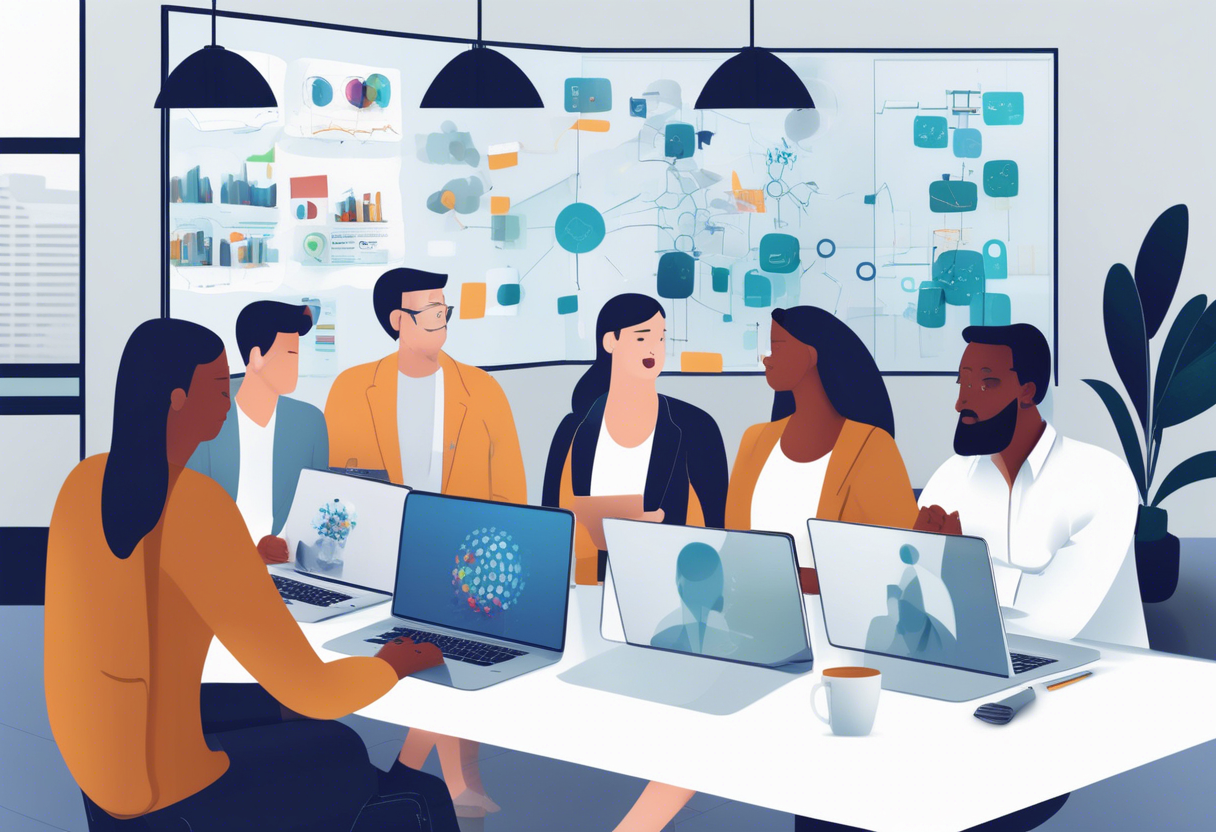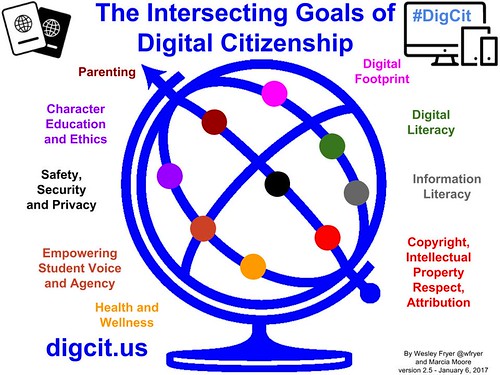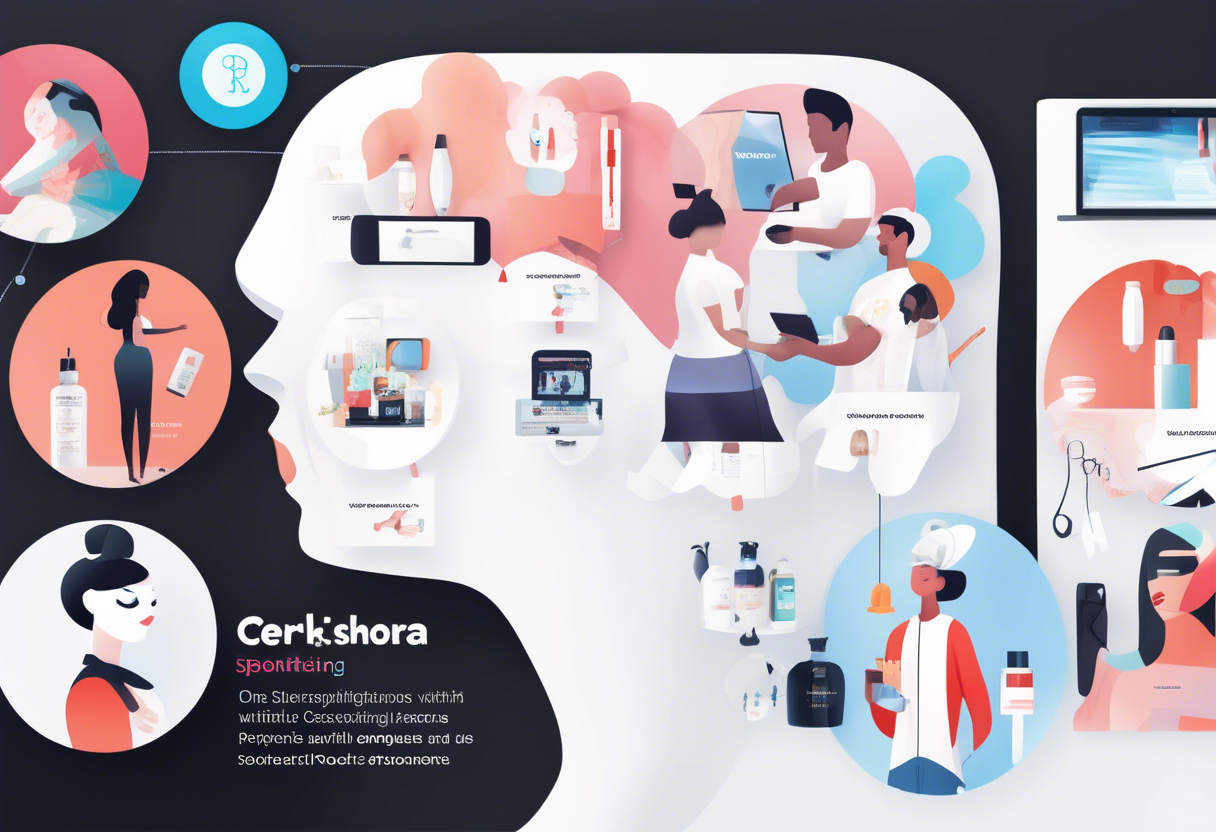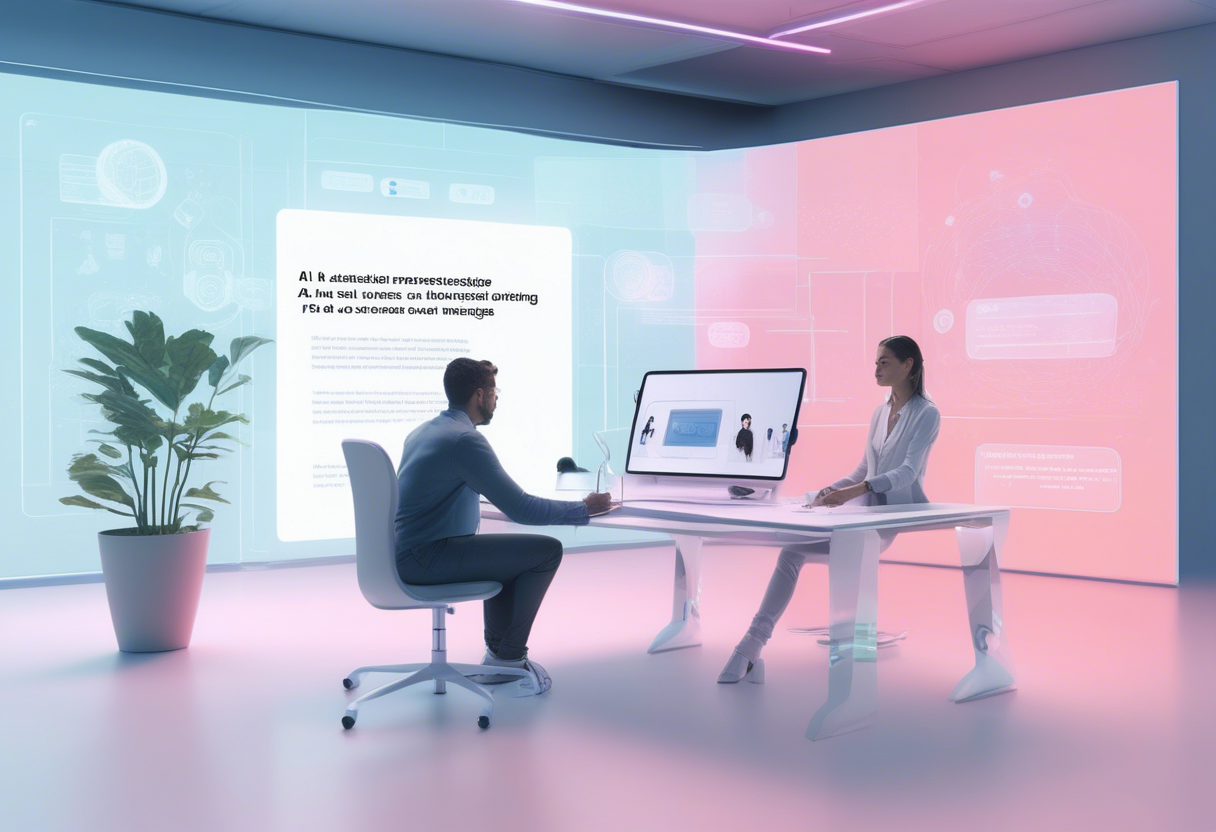
In our busy work lives, good communication skills matter a lot. Did you know 86% of workers and leaders say poor communication and collaboration lead to workplace failures? That's pretty big! Now, think about Artificial Intelligence stepping in to change how we talk and work together. Imagine having a helper that gets how you communicate and helps you make your message clear and strong. In this article, we'll look at how AI can boost your workplace communication skills. We’ll guide you on using AI tools step-by-step and show how AI can make conversations smoother and more personal. Whether you're experienced or just starting out, learning about AI might just help you communicate better. Ready to explore?
Understanding AI's Role in Enhancing Workplace Communication Skills
AI's Impact on Workplace Communication Skills
AI enhances workplace communication by managing repetitive tasks and integrating various communication tools, allowing employees to focus on more meaningful conversations. Tools such as chatbots and virtual assistants facilitate clearer and more direct communication. Additionally, AI provides instant grammar and style corrections and assists with translations, simplifying multilingual interactions.

However, despite these advantages, AI may reduce personal interactions, potentially leading to feelings of isolation and diminished emotional connections.
Advantages of AI for Communication Skills
AI effectively breaks down language barriers through automatic translations, facilitating communication in multilingual workplaces. It employs sentiment analysis to enhance message effectiveness and personalization. Chatbots and other AI tools expedite customer service, improving response times and satisfaction levels. These tools promote swift, clear communication, increasing efficiency and reducing misunderstandings.
Nevertheless, maintaining a balance between leveraging AI and preserving the human element is crucial for effective communication.
- AI enhances communication efficiency
- AI reshaping workplace communication
- AI-powered analytics
- AI collaboration challenges
Step-by-Step Guide to Implementing AI Tools for Communication Skill Building
Establish Communication Objectives with AI
Identify specific communication skills or goals you want to improve.
First, figure out which communication skills you want to get better at. Maybe you want to speak better in public, write more clearly, or use body language more effectively. AI tools can help by analyzing your current communication style and highlighting areas for improvement, such as clarity, tone, or confidence.
- If public speaking is your focus, AI can help you cut down on filler words, vary your voice, or maintain eye contact.
- If writing is your thing, AI can help you avoid passive voice and make your messages more impactful.
Set measurable targets to track progress.
Once you know what you want to improve, set clear goals to track your progress. AI platforms are great for this because they offer personalized feedback and monitor your development over time. For example, you might aim to cut filler words in your presentations by 50% in a month. Ensure these goals are specific and time-bound so you can clearly see your improvement.

Choose AI Tools for Communication Skill Needs
Choose AI for speech improvement to analyze tone, pace, clarity, and emphasis.
Picking the right AI tools starts with understanding their capabilities. For speech, AI can analyze your tone, pace, clarity, and emphasis, providing feedback to enhance your speaking skills. These tools can tell you if you're speaking too fast or not clearly enough.
Use AI for writing enhancement to evaluate language use, sentiment, and impact.
For writing, select AI tools that assess your language use, sentiment, and overall impact. They can help simplify complex sentences and evaluate the emotional tone of your writing. These tools suggest synonyms, rephrase sentences, and point out jargon to improve clarity and style.
Opt for AI assessing non-verbal communication like facial expressions and body language.
For non-verbal communication, choose AI tools that analyze facial expressions and body language. These tools review videos to provide feedback on your posture, gestures, and facial expressions, highlighting areas for improvement like maintaining eye contact or using open gestures.
Consider AI platforms like Google Talkpal for language learning.
For learning a new language, platforms like Google Talkpal are excellent. They offer interactive exercises and real-time feedback to help you improve. These platforms can help you expand your vocabulary, refine pronunciation, and enhance conversational skills in a new language.
Collect Communication Data for AI Analysis
Record speeches or conversations.
To effectively use AI tools, start by collecting data on your current communication. Record speeches or conversations to provide AI with audio data for analysis. Ensure the recordings are clear and free from background noise.
Collect written communication samples.
Gather samples of your written communication to allow AI to evaluate your language use, sentiment, and clarity. Collect a variety of samples for a comprehensive view of your writing skills.
Capture video recordings for non-verbal cues.
For a complete analysis, record videos that show your non-verbal cues. This could be a presentation or a casual chat. The video helps AI assess your body language and facial expressions.
Input Data into the AI Tool
Upload recorded audio, video, or text data into the AI platform.
With your data ready, upload it into the AI tools. Follow the platform's instructions for data input. Make sure files are in the right format and of good quality.
Ensure data quality for accurate analysis.
Good data quality is key for accurate feedback. Clear audio and well-lit video help AI pick up on speech and facial nuances. Review your recordings and samples to ensure they're clear and error-free.
Review AI-Generated Feedback and Insights
Examine reports on speech patterns.
After analysis, check the feedback and insights from AI. Look at reports on your speech patterns, like tone and pace, to see where you can improve.
Analyze text feedback on language use.
For writing, go through feedback on your language use. This might include simplifying sentences or adjusting the tone. Look for patterns that show where you need improvement.
Observe assessments of non-verbal cues.
When reviewing non-verbal feedback, consider the assessments of your expressions and body language. See how these align with your own experiences.
Interpret Feedback to Identify Improvement Areas
Focus on specific elements highlighted by AI.
With feedback in hand, zero in on specific areas the AI highlighted. These might be frequent issues or spots where small changes could make a big difference.
Prioritize areas aligning with initial objectives.
Align your focus with the communication goals you set earlier. If you aimed to improve public speaking, prioritize feedback related to speech patterns.

Practice Targeted Communication Exercises
Use AI-driven platforms for immersive practice.
Put feedback into action with targeted exercises. Use AI platforms offering practice scenarios to hone your skills.
Apply AI recommendations to modify communication style.
During practice, apply the AI's recommendations. Modify your style based on insights and suggestions.
Engage in simulated tasks with AI coaching.
Use AI coaching for simulated tasks that mimic real-world scenarios. These help build confidence and reinforce skills.
Use AI to Generate and Refine Prompts for Practice
Craft prompts for generating practice scenarios.
AI can help create practice prompts tailored to your needs. Craft prompts reflecting the skills you want to improve.
Experiment with different prompt structures.
Mix up prompt structures to keep practice engaging. This helps develop versatility in your communication skills.
Iterate the Process Regularly
Continuously record new communication samples.
To keep improving, regularly record new communication samples. This ongoing data collection helps track progress.
Track progress using AI analytics.
Use AI analytics to see how you're doing against your targets. Review data to see where you've improved most.
Adjust goals based on feedback.
As you grow, be open to changing your goals based on feedback. Reassess regularly to ensure they match your abilities.
Leverage AI Tools to Simplify Communication Tasks
Use AI to draft and tailor messages.
AI can simplify tasks like drafting messages. Use it to create drafts, then refine them for your audience.
Employ AI to distill complex information.
For complex info, use AI to simplify content. This makes it easier for your audience to understand.
Engage in Training or Workshops on AI Communication Tools
Attend sessions to learn best practices.
Consider training sessions on using AI tools effectively. These offer insights into integrating AI into skill-building.
Stay updated on new AI tools and features.
AI is always evolving. Keep up with new tools and features to make sure you're using the best technology.
Selecting the Right AI Tools for Communication Enhancement
When choosing AI tools, think about your goals and what features will support your efforts. Research options and read reviews to understand each tool's strengths and limitations.
Integrating AI Tools into Workplace Communication
Bringing AI tools into the workplace needs careful planning. Make sure they fit with your organization's goals and train employees to use them well.
Evaluating AI's Impact on Communication Skills
Finally, measure AI's impact by checking your progress against your targets. Use both qualitative and quantitative data to see where you've improved. Celebrate successes and learn from setbacks to keep growing.
AI tools for communication skills offer a comprehensive approach to skill-building by providing personalized feedback, realistic simulations, and data-driven insights. By leveraging these tools, you can ensure targeted and measurable improvement in your communication skills.
AI-Powered Personalization in Communication Skills
Enhancing Communication Skills with AI Personalization
AI enhances communication by creating detailed user profiles, which include attributes like age, habits, and preferences. This information is crucial for crafting real-time, personalized interactions. Through predictive analysis, AI adjusts the tone and language to align with individual preferences, making conversations more engaging.
By analyzing user behavior and content interaction, AI delivers messages that resonate, thereby boosting motivation and connection. This technology powers targeted email campaigns, product recommendations, and chatbots that provide quick, customized responses. Additionally, generative AI facilitates the creation of personalized marketing materials, enabling content production at scale.

Successful AI Personalization in Communication Skills
-
Cerkl: This platform leverages AI to customize employee updates with role-specific content, enhancing motivation and reducing information overload.
-
Sephora: By integrating data from stores and apps, Sephora uses AI personalization across various channels to offer a seamless shopping experience.
-
Netflix: Netflix employs generative AI for personalized recommendations and marketing materials, increasing engagement and viewer retention.

Overcoming Communication Barriers with AI
AI Tools for Language Translation in Workplace Communication
AI has transformed the landscape of translation and transcription, enabling quick text and speech translation that facilitates smoother cross-cultural communication. These tools, which operate in real-time, are pivotal for global connectivity.
- Speech-to-text and text-to-speech tools like Murf AI and Lovo AI enhance clarity.
- Krisp's AI Live Interpreter offers real-time speech translation, making it invaluable in multilingual environments and enhancing customer service experiences.
Improving Workplace Communication Clarity with AI
AI plays a crucial role in simplifying complex texts, particularly for non-native speakers, by minimizing the use of idioms. This aids ESL audiences in grasping the essence of the content, fostering inclusivity.
Moreover, AI analyzes communication patterns and provides personalized suggestions for improved interactions. It also automates transcription and summarization processes, making meetings more efficient by extracting key information to enhance clarity and brevity.
FAQs
How Does AI Personalize Communication to Boost Employee Engagement?
AI enhances employee engagement by customizing messages to align with each individual's style and preferences. By analyzing data and communication patterns, AI crafts messages that resonate with employees, making them more relevant and impactful. It adjusts the tone, content, and timing based on personal preferences and behaviors, fostering stronger connections and motivation. For example, AI might send personalized reminders and motivational notes based on an individual's typical responses and preferred communication methods.

What Are the Key Benefits of AI in Workplace Communication Skills?
AI streamlines operations by handling routine communication tasks, allowing employees to focus on more critical matters. It ensures clarity and consistency in messages through templates and language models. Additionally, AI facilitates better teamwork by enabling quick information and feedback sharing. For instance, AI chatbots can manage common HR inquiries, reducing response times and maintaining consistent answers across the board.
How Does AI Manage Routine Communication Tasks in the Workplace?
AI automates repetitive tasks such as scheduling meetings, sending reminders, and addressing FAQs. It can draft emails or messages based on previous interactions, accelerating communication processes. AI tools also monitor communication flows, identifying bottlenecks or errors and suggesting improvements. An AI assistant might automatically organize team meetings and confirm attendance, minimizing manual effort.